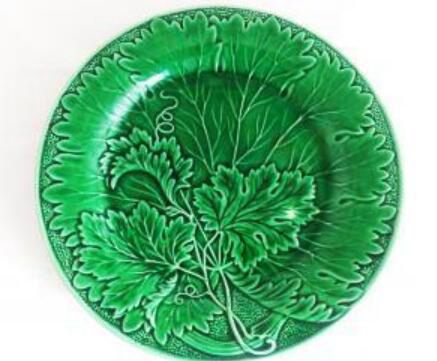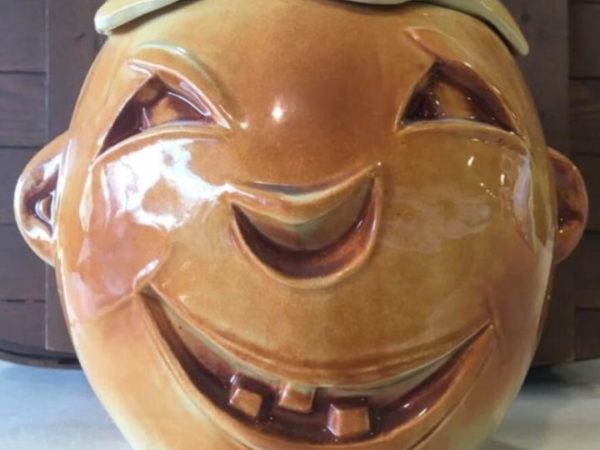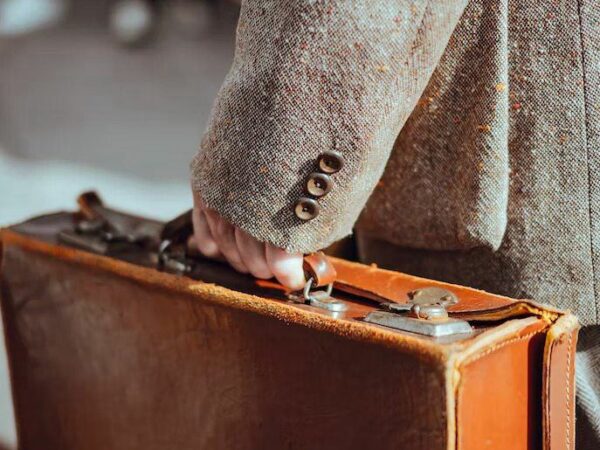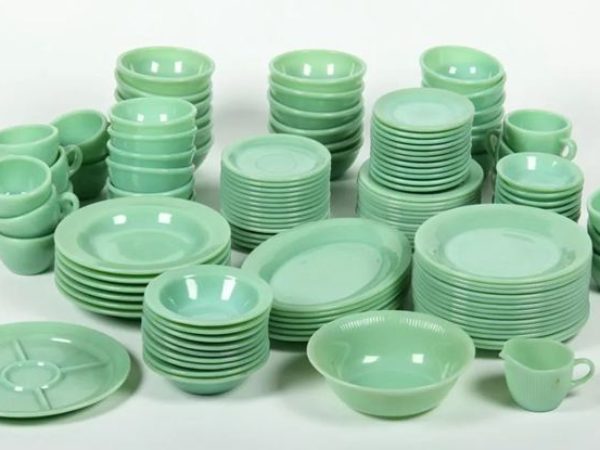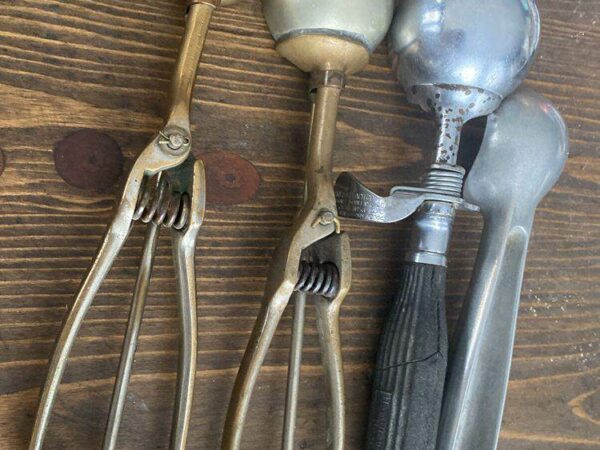Wedgwood’s approximately 260-year history as one of the world’s most renowned producers of ceramic goods didn’t start overnight. Josiah Wedgwood’s unique ability to combine classic taste with cutting-edge design helped the company become one of the most enduring ceramic factories ever. Today, the brand is associated with elegance and taste.
Antique Wedgwood china continues to captivate porcelain and china connoisseurs due to its superb quality and vast designs. In addition to its aesthetic appeal, collectors of vintage Wedgwood china are drawn to them for the profit potential.
If you have one of these or intend to buy one, you’d be curious about their value. Let’s explore different Wedgwood china patterns, their worth, and more.
Table of Contents
Overview of Wedgwood
The history of Wedgwood china is fascinating, giving a better insight into where these beautiful designs began.
Josiah Wedgwood was born into a family of potters in 1730, and he began his apprenticeship at the age of six. As an adult, he excelled at his art, experimenting with various porcelain formulations and making significant technological improvements in the pattern process.
Wedgwood’s story begins in 1759, when Josiah and colleague Thomas Whieldon established a pottery workshop in Stoke-on-Trent, England. The new establishment facilitated the development process. By the following decade, Wedgwood had perfected a new type of earthenware that used Cornwall clay and had a creamy, white finish.
In 1765, he manufactured a tea set in the design and delivered it to Queen Charlotte of Mecklenburg-Strelitz of England. She was so enamored with it that she permitted Wedgwood to call it “Queen’s Ware.” With the queen at his side, Wedgwood was well on his way to becoming a key figure in the ceramics industry.
Josiah Wedgwood bequeathed his business to his sons when he died in 1795. They had no interest in running it, and the company languished for the following century, despite its popularity. However, circumstances improved throughout the twentieth century.
WWRD Group Holdings Ltd was formed in 2009 when the Wedgwood and Waterford conglomerate joined with Royal Daulton. Though the terrain for modern Wedgwood china had altered, the brand retained its professional craftsmanship and overall design importance.
That year, they set a new record when a Wedgwood teapot manufactured in protest of the Stamp Act of 1765 sold for $112,128. Wedgwood’s legacy lives on today, with some of the most valuable patterns and styles fetching record-breaking prices.
Most Popular Wedgwood Patterns
The most common of these patterns are as follows:
- Jasperware
- Black Basalt
- Queen’s Ware
- Fairyland Lustre
- Majolica
Jasperware
When Wedgwood presented his famous jasperware collection in 1774, it was a big hit. This is because it followed up on the massive success of the “Frog Service.”
The Frog Service is a huge dinner and dessert service created for Empress Catherine the Great of Russia in 1774. There were fifty sets in the service, and 944 pieces were ordered, 680 for dinner and 264 for dessert.
Wedgwood jasperware sculptures are known for their bright white ceramic reliefs that appear to rest on rich colors muted by a matte finish. Wedgwood’s primary inspiration for the style was a cameo from antiquity, an old relic that depicts scenes from ancient Greece and Rome.
The Portland Vase, made by Wedgwood in 1789, is the most well-known example of this style. However, collectors are willing to pay great rates for ancient Wedgwood pieces that feature any of these Classical elements.
Most Expensive Jasperware
A Pair of Large Wedgwood Green Jasperware Vases and Covers Christie’s was sold for £55,250 in London, the United Kingdom.
The Lord Dacre Copy: an essential Wedgwood trial ‘First Edition’ Portland vase sold for £29,090 in Bonhams, London, United Kingdom (March 2006)
This Jasperware Light Blue Covered Urns and Pedestals sold for $26,290 in Doyle, New York, New York.
Pair of Wedgwood Black & White Jasperware Pegasus Vases sold for $17,250 in Pasadena, California.
Black Basalt
“Black Basaltes” designs by Wedgwood began in 1768 as a forerunner to his pursuit of jasperware pieces. Wedgwood was able to outperform the “Egyptian black” stoneware of other businesses by adding manganese to his clay combination. This resulted in vessels with deep, matte black surfaces.
With a rich red tint, Wedgwood’s Black Basalt pieces were commonly adorned with “Rosso Antico” designs based on ancient Rome and Etruria.
Queen’s Ware
“Queen’s Ware” got its name because Queen Charlotte liked Wedgwood’s new earthenware. It became a household favorite, even though it was not for royalty but the general public.
Early pieces of Queen’s Ware that are still in great shape can sell for a lot of money. However, the most valuable pieces are from a Queen’s Ware service made for a real queen. This is the “Frog Service,” designed by Wedgwood for Russia’s Empress Catherine the Great in 1773 and has a green frog sitting in a border of oak leaves.
Fairyland Lustre
Wedgwood’s ‘Fairyland Lustre’ china rivals Jasperware in popularity but has a distinct style. The pattern is a collector’s favorite. Daisy Makeig- Jones joined Wedgwood’s team of painters in 1909 and grew to prominence many years later as she began to take on greater design authority. She was the brain that created the Fairyland Lustre designs.
Her initial works were published in 1915, and they quickly became known for their excellent color and intricate decorative themes. This opulence fit nicely in with the decadence of the late 1910s and the “roaring” 1920s. However, it didn’t do well in the Great Depression. Jones’ Fairyland Lustre creations eventually phased out in 1931 when she quit Wedgwood entirely.
Majolica
Wedgwood Majolica has motifs inspired by nature. Many of these were created in the late 1900s, and they frequently have an Art Nouveau appearance that collectors find appealing.
How to Identify a Wedgwood pattern
Since the company almost always labels its wares, you can recognize Wedgwood china by its distinctive patterns. These hints will help determine its identity.
Find the Wedgwood Mark
Almost every piece of Wedgwood has a stamp. However, during the course of the company’s history spanning more than 250 years, several have been used. The Wedgwood maker’s mark almost often contains a signature in addition to the symbol it uses as part of the mark. In most cases, it will make one of the following assertions:
- Wedgwood England
- Wedgwood of Etruria & Barlaston
- Wedgwood, Made in England
Additionally, it might have an urn with “Wedgwood” written underneath it. The urn is the sole image that you’ll find with any Wedgwood marking.
See the collection of Wedgwood marks on Antique Marks’ website or The Potteries’ to know which stamp corresponds to which period. Unfortunately, not all pieces have these marks, particularly those that were created in the early part of the 18th century. In other words, the lack of a maker’s stamp does not always indicate that the object is not authentic Wedgwood.
Designs
Wedgwood featured various popular patterns. Jasperware had Greek or Roman-inspired landscapes; Queens Ware was embossed with ivy or similar print and different china patterns.
Wedgwood made ceramics, bone china, and black basalt stoneware. You can also look through the collection of the Wedgwood Museum to learn more about its distinct pattern. Identifying these will help you in learning how to spot a Wedgwood creation.
Learn How to Read Date Stamps
Wedgwood began using a three-letter stamp to denote the date of manufacture after 1860. The month is represented by the first letter, the potter by the second, and the year by the third. Understanding how this works, though, can be difficult.
Factors that affect the worth of Wedgwood patterns
While you can find newer versions of this china for a few dollars, rare Wedgwood porcelain can cost a lot, as you can see above. However, the value or how much you can sell them depends on s few factors. Let’s look at the elements that can affect the price of Wedgwood patterns.
Is it Vintage or an Antique
Purists believe that the earliest examples of antique Wedgwood porcelain were before 1910. In most contexts, you take an object to be an antique if it is at least one hundred years old. Many collectors may falsely assert that they possess an antique Wedgwood dish when they only possess a vintage Wedgewood china.
It is possible to classify as vintage any pattern that Wedgwood produced between 1910 and 1985. However, it is essential to be able to differentiate between the two. An antique pattern from the early 1800s will undoubtedly be more challenging to find and expensive to purchase than a vintage design from the 1930s.
Condition
Finding old pieces of glassware in good condition is a long shot. Therefore, these pieces hold more value than others.
Is it a Table or studio piece
Studio works are often more valued than tableware, although a few exceptions exist. A set that consists of a dinner server, tea set, or anything similar will be valuable. However, a studio piece created by an artisan will be worth more. Most studio items have numbers, and a good example of these is the Fairyland pieces.
How to Determine the Value of Wedgwood
It might be challenging to assess the worth of individual items, particularly older designs. However, with a bit of investigation, you can determine the actual value of your prized china.
If you have ancient Wedgwood China and want to know its worth, here are some pointers.
Internet-based Research
One of the first places to determine the worth of your item is online. Several sites help you identify the make and pattern of the product, helping you determine its rarity and actual value. A good example of such a site is potteriesauction.
Potteriesauction carries a large selection of Wedgwood china, including both current and older patterns. From the website’s online inventory, you can learn more about your collection of Wedgwood and its value.
If you cannot find your piece on your own or are having difficulties identifying your pattern, you can send the company an email with a photo. With this, they will aid you with identification and evaluation.
Learn its History
Put in as much effort as you can to get as much information as you can on the history of your Wedgwood piece. What you know about its value depends on where and how the item came to be.
The authentication documents or the date and place of the piece’s initial acquisition can help you with this. If you do not have access to these types of documents, the Wedgwood Museum is a wonderful resource. As mentioned earlier, it helps you learn about the general history of the company and its most popular patterns.
Compare Prices
You may get an idea of how much your item is worth by comparing it to recently sold products. These items should be in the same style and are in the same condition. You won’t get the same level of accuracy as you would from a professional evaluation, but it can still give you some helpful information. The following are some recent sales of Wedgwood items, along with an estimate of their value:
- One numbered Wedgwood Jasperware vase with the “Procession of the Deities” decoration was sold for close to $2,000. It was in excellent condition.
- A Wedgwood Fairyland Lustre bowl in excellent condition and numbered brought in close to $1,300 at auction. Only a hundred of these were ever produced in total.
- A fish-shaped vase made of black Jasperware was sold for $450. Even though it was not part of a limited edition run, the item was in pristine condition.
Get an Appraiser
The easiest way to determine the worth of your Wedgwood pattern is by getting a professional. In fact, this is the fastest and most convenient option if you can’t spare the time for a boatload of research. There are several ways to go about this.
Ask around in your neighborhood for a certified appraiser. An antique or dinnerware shop is the best place to ask around. If you can’t get a physical one, go online.
Note that sending your dinnerware to an appraiser is a bad idea. You should only send photographs and photocopies of any documents, never the originals, unless you are meeting with an appraiser in person.
What You Should Know About Collecting Wedgwood
If you’re looking for highly valuable Wedgwood, go no farther than the 18th-century items, such as lilac or green Jasperware. It’s possible to collect current productions of jasperware urns from the early 20th century for far less money.
It’s not hard to find the canewares and basalts, either. You’ll be spoiled for choice at antique stores and collectibles fairs because there is so much Wedgwood available.
The price can vary significantly depending on the item’s age, color, design, and condition. It’s also common to look at the bottom of a piece to establish its age. A complete set of dishes or a unique vase could cost $1,000 or more.
On the other hand, you’ll have to pay a few hundred dollars for some plates or saucers. You can also purchase some younger and more contemporary pieces of these items for less than $100.
However, be wary of imitations. Fake basalt and Jasperware are also readily available. One thing to note is that the real 18th-century object has a smooth, velvety surface and is crisp, with highly crafted detail.
It is critical to note that most authentic Wedgwood pieces, old or new, are marked on the base. Furthermore, watch out for the extra ‘e.’ Your goal is to collect ‘Wedgwood,’ not ‘Wedgewood.’
Where to Buy Wedgewood China
Buying Wedgewood doesn’t take any special procedure; it’s the same as shopping for other china. However, if you are looking for unique pieces, a trip to an antique dealer’s shop is better. Here, you might be lucky to find something that you wouldn’t have gotten in regular stores.
Owners of their collection might also be willing to sell their items in an auction. Still, the best way to lay hands on these rare or authentic items is online. Several online marketplaces house buyers that put up their pieces for sale. The best part about online purchases is that you get multiple options, though you also have to consider shipping fees.
If you are looking for the best online platforms to get your china, consider these options:
Wedgwood: What other place to get what you want than buying from the makers themselves. Wedgwood.com is the perfect place for looking for varieties of these pieces. While you can peruse their collection, you can only shop once you have created an account. The process takes only a short time.
eBay: One of the best online platforms to get authentic Wedgewood is eBay. Here, several sellers advertise their pieces and place a price. Some also auction them and sells them to the highest bidder.
Amazon: This multinational company focuses on e-commerce, and selling china is not left out. Amazon has some unique items that you should check out. You can narrow your search to suit your preferences.
Macy’s: This is another online store where you can find some of Wedgwood’s items. Macy’s collection might not be as extensive as other stores, but they also feature several nice options.
How to Care for Wedgwood
The Wedgwood collection is a treasured asset you can hand down from generation to generation. If you take proper care of yours, it will continue to bring joy to your children and your grandchildren for many years. Even if this is not the case, you could decide to sell these pieces, and to have them in good condition is a plus.
While you can care for these items as you would any other, a few things will help preserve them. Here are some pointers that could be useful:
- It is essential to keep your china out of places where it will be exposed to direct sunlight. Furthermore, it would be best to keep these in a safe place where they will not be chipped or shattered by accident. Using a cabinet is a good idea. A cabinet with a glass front will keep your belongings safe and allow you to exhibit them elegantly.
- If you plan to use the dishes, you should always wash them with a mild soap. Afterward, give them a thorough rinsing in warm water, not hot. You can also place a folded tea towel at the bottom of the sink. This ensured that dishes wouldn’t be able to break from hitting the bottom of the sink. Allow them to air dry somewhere that does not expose them directly to the sun before putting them away.
- There is also the option of using soft flannel bags to hold fragile objects. These will prevent them from becoming covered in dust while also acting as a cushion and protecting them from chipping.
Final Thoughts
Founded in 1759, Wedgwood began as an independent potter in England. He has earned the title of “Father of English Potters” due to his passion for innovation and creativity. Wedgwood is the most famous English china, and it’s no wonder that it piques people’s interests.
The value of newer items might fall beneath $10 each, but older ones can cost a fortune. In fact, several collectors are willing to pay the price for antique china of a particular color. This is unsurprising given that dark blue Wedgewood china was the most popular and best-selling color until the end of jasper manufacture. Red is the rarest of all Wedgwood patterns.
The challenging part lies in trying to determine the value of these items. Though a few pointers can help, you might not be able to easily place a price for them if you want to sell. In this case, hiring a professional or seeking help online becomes the best option.
If you are a collector, you would want to know the value of what you’re buying. Thankfully, we have put together this guide to help you identify Wedgewood china. Their appeal and distinct designs would make an excellent addition to any china collection.





